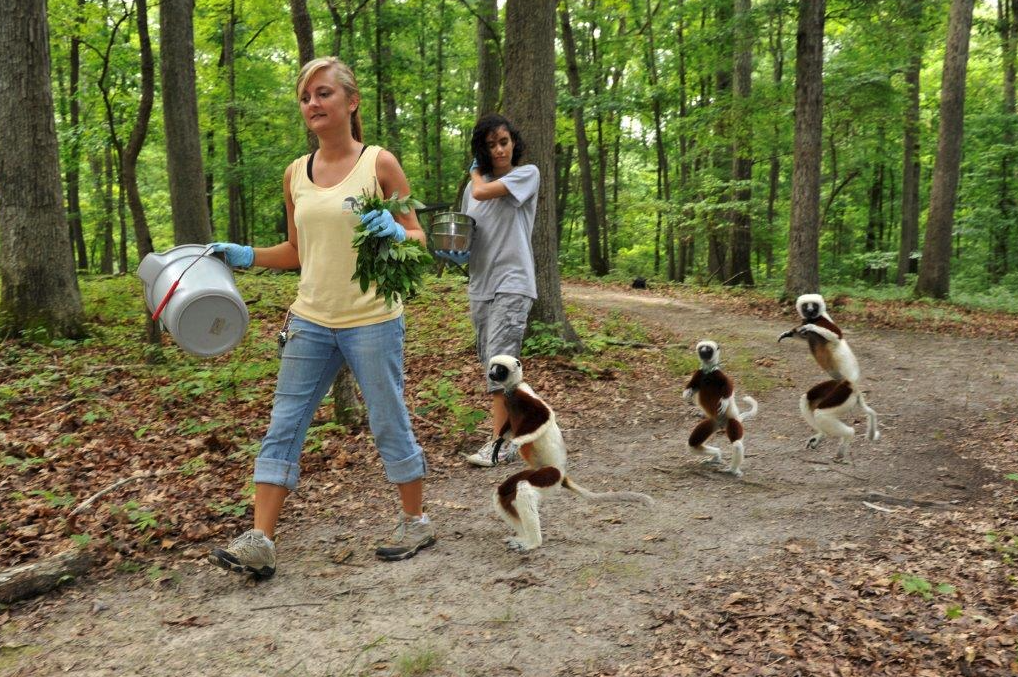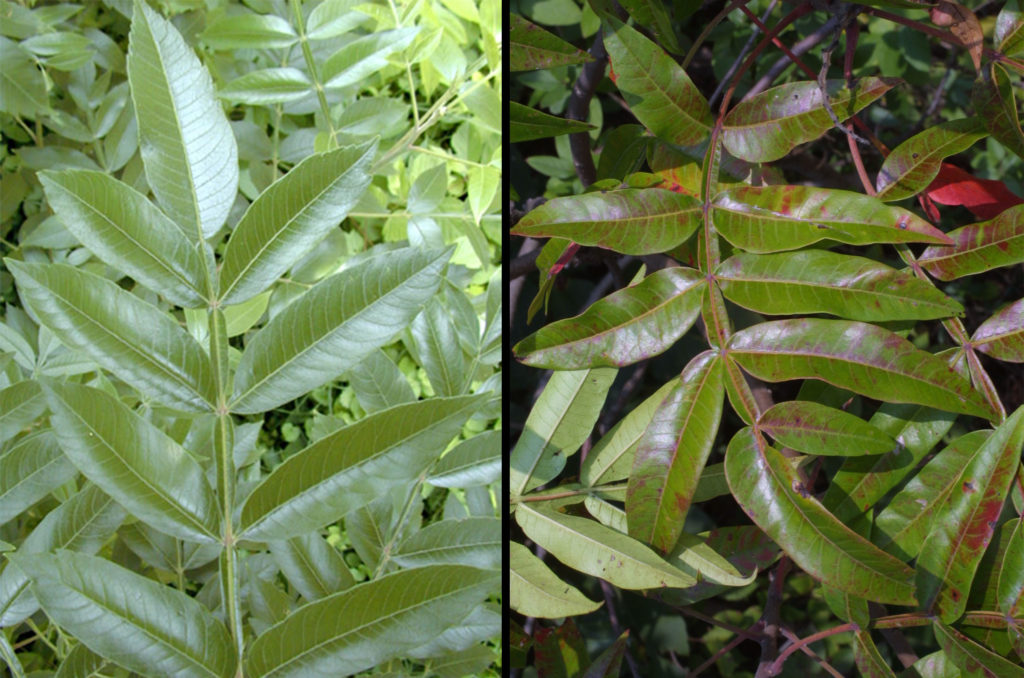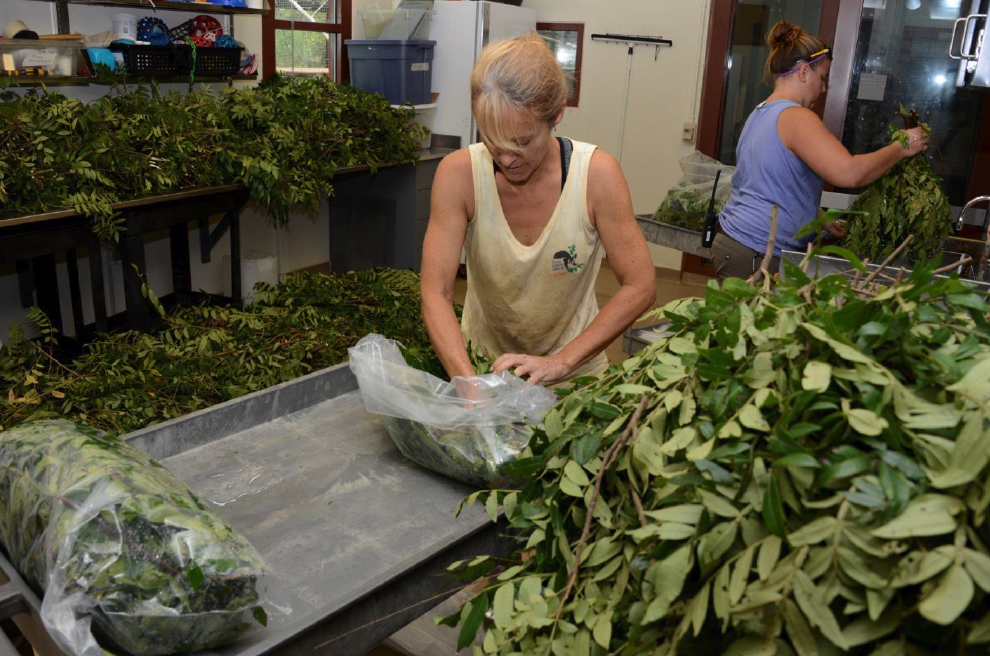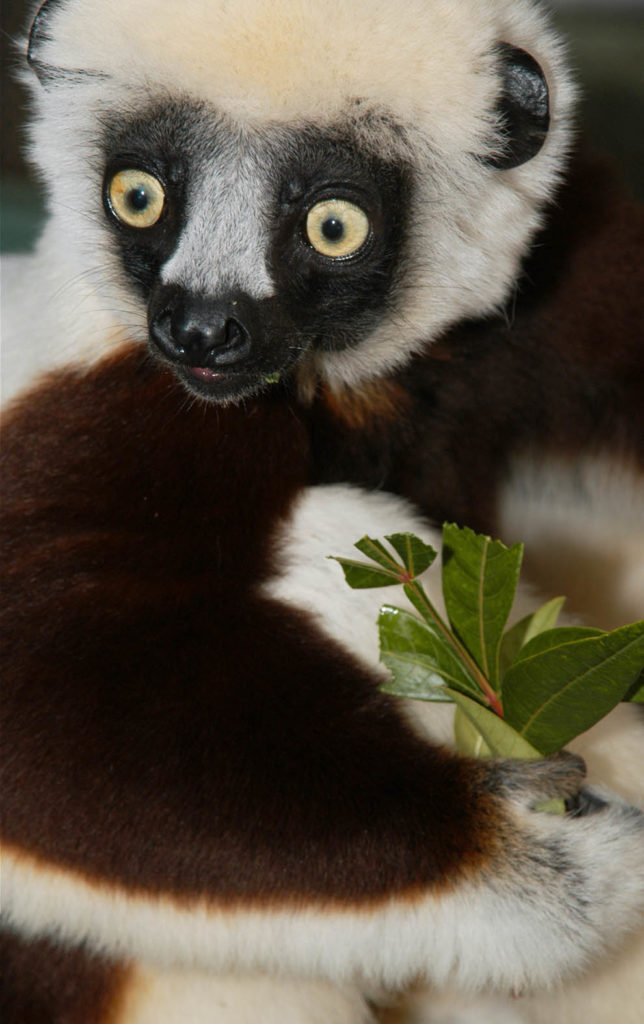
Even free-ranging sifakas love their afternoon browse! Their favorite species of plant to eat here in the U.S. is winged sumac (Rhus copallinum, pictured above), which is high in the tannins and sap the sifakas enjoy.
The Duke Lemur Center is home to 32 critically endangered Coquerel’s sifakas, folivorous primates with extremely specialized dietary needs. Because of their sensitive digestive systems, these delicate lemurs need to ingest leaves daily in order to survive and stay healthy. At the Duke Lemur Center, our animal care team harvests fresh redbud, tulip poplar, mimosa, and sweetgum every day during the warmer months and feeds these leaves (called “browse”) to all of our sifakas. Their favorite species of plant to eat here in the U.S. is winged sumac, Rhus copallinum! It is high in the tannins and sap that they enjoy.
Every fall, our animal care team also harvests and freezes enough browse to feed the sifakas throughout the winter, when there are no fresh leaves to harvest. Winged sumac is the only plant that will freeze well, without disintegrating upon thawing. We fill seven large chest freezers with sumac harvested from many different sites around Durham and Chapel Hill. (Learn more about our annual sumac harvest HERE.)
How you can help
In recent years, some of our prime sumac harvesting sites have disappeared, many due to land development; and we’re constantly on the lookout for new areas to harvest. It is crucial that we cut only pesticide-free sumac, and many of the best sumac patches are on private property. We hope to collaborate with folks from the community so that we can continue to supply the DLC’s sifakas with their favorite leaves year-round!
If you are a local landowner (within an hour’s drive of the Duke Lemur Center) and have winged sumac on your property, we would love to discuss the possibility of partnering with you for our 2019 sumac collection! We would need permission for our staff to go onto your property to harvest and assurance that the sumac has never been sprayed with pesticides. We are looking for sumac sites small and large that could accommodate either:
(a) periodic, small harvests throughout the spring, summer, and fall; or
(b) a one-time, large-scale harvest in July or August. Harvesting the sumac to freeze for our winter feeding is a big undertaking, so the larger the patch the better! The size of the patch should be somewhere in the realm of 400+ square feet to remain viable while being trimmed.
If you are interested in participating in our browse program, please contact Erin Hecht at erin.hecht@duke.edu.
We’re also in need of a trailer capable of hauling a Kawasaki Mule behind the DLC’s Toyota Tundra, to transport our Mule to sumac collection sites during our harvests. If you have a new or used trailer you’d be willing to donate to the DLC, please contact or Director of Operations, Greg Dye, at greg.dye@duke.edu.
We, and the sifaka, thank you!

The sumac the DLC harvests is winged sumac, Rhus copallinum, pictured above (both images). We do NOT harvest poison sumac, Toxicodendron vernix. Although they are in the same plant family of Anacardiaceae, they are definitely different plants!

We use fresh browse in the summer, but in the winter, we feed out frozen sumac. Every fall, the sumac is cut from various locations around Durham and then washed, bagged, and frozen the same afternoon.

If you’re a local landowner interested in participating in our 2019 browse program, please contact Erin Hecht at erin.hecht@duke.edu. We, and the sifaka, thank you!

